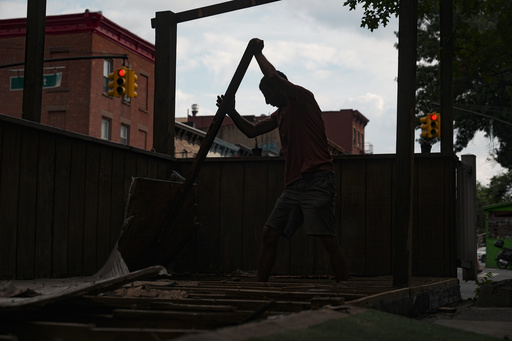Outdoor dining has been a saving grace for many New York City restaurants during the COVID-19 pandemic. However, four years into this innovative era, the freewheeling outdoor dining scene has come to a close. Restaurants were given a deadline to choose between following strict regulations for their outdoor setups or dismantling them. Unfortunately, only a fraction of the 13,000 restaurants that participated in the temporary Open Restaurants program have applied for permits under the new system.
Mayor Eric Adams introduced new guidelines in response to complaints about outdoor dining structures attracting rats and disorder. While the city aims to streamline the application process for permanent outdoor dining, many restaurant owners feel that the new rules will eliminate the flexibility they enjoyed during the pandemic. The requirement to take down roadside sheds between December and April each year is a significant change that some establishments find burdensome.
The once makeshift plywood dining structures that emerged in New York City have now evolved into elaborate outdoor dining spaces with planters, lights, and heating lamps. However, these structures now need to adhere to uniform design standards and incur licensing and square footage fees. Despite the efforts to regulate outdoor dining, there are concerns about the financial burden and logistical challenges that restaurants will face.
Some restaurants, such as Blend in Queens, have opted to remove their roadside structures and apply for sidewalk seating to avoid the annual dismantling requirement. Restaurant managers express concerns about the extra work involved and prefer a more permanent solution. The shift towards sidewalk-only seating is evident as half of the restaurants that applied for the new program have chosen this option over roadway setups.
Community boards are now reviewing applications for outdoor dining structures, with concerns ranging from parking issues to noise disturbances and pest problems. While some establishments see outdoor dining as a positive addition to their businesses, others are faced with neighborhood conflicts and trash management challenges. City officials have set fines for establishments that fail to comply with the regulations, emphasizing the importance of adhering to the new guidelines.
As restaurants bid farewell to their outdoor dining sheds, there is a mix of relief and nostalgia. For many, these structures represent a challenging period marked by loss and financial struggles. While the end of this outdoor dining era signifies a shift in the restaurant landscape, it also serves as a reminder of the resilience and adaptability that businesses have shown during unprecedented times.
